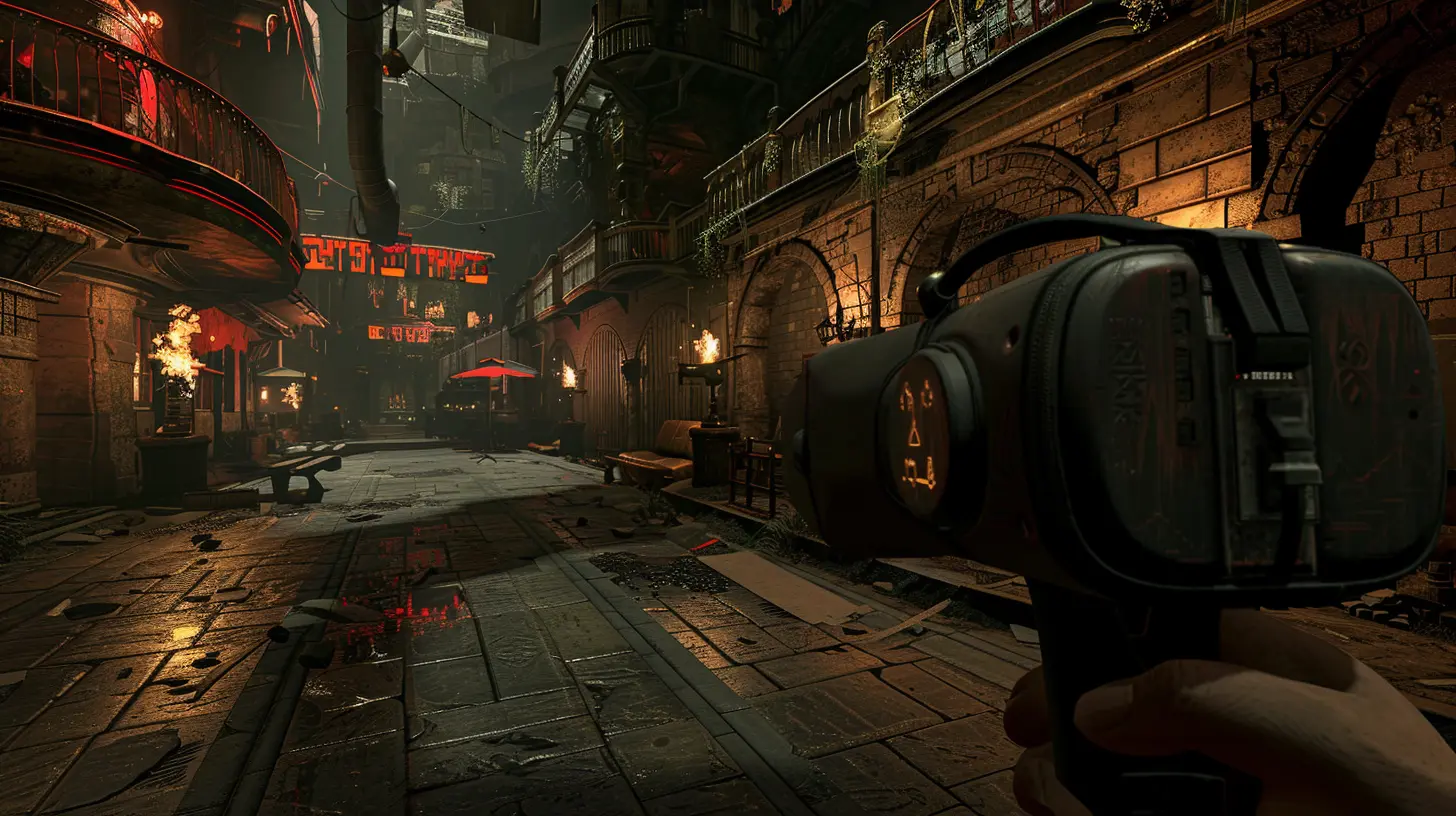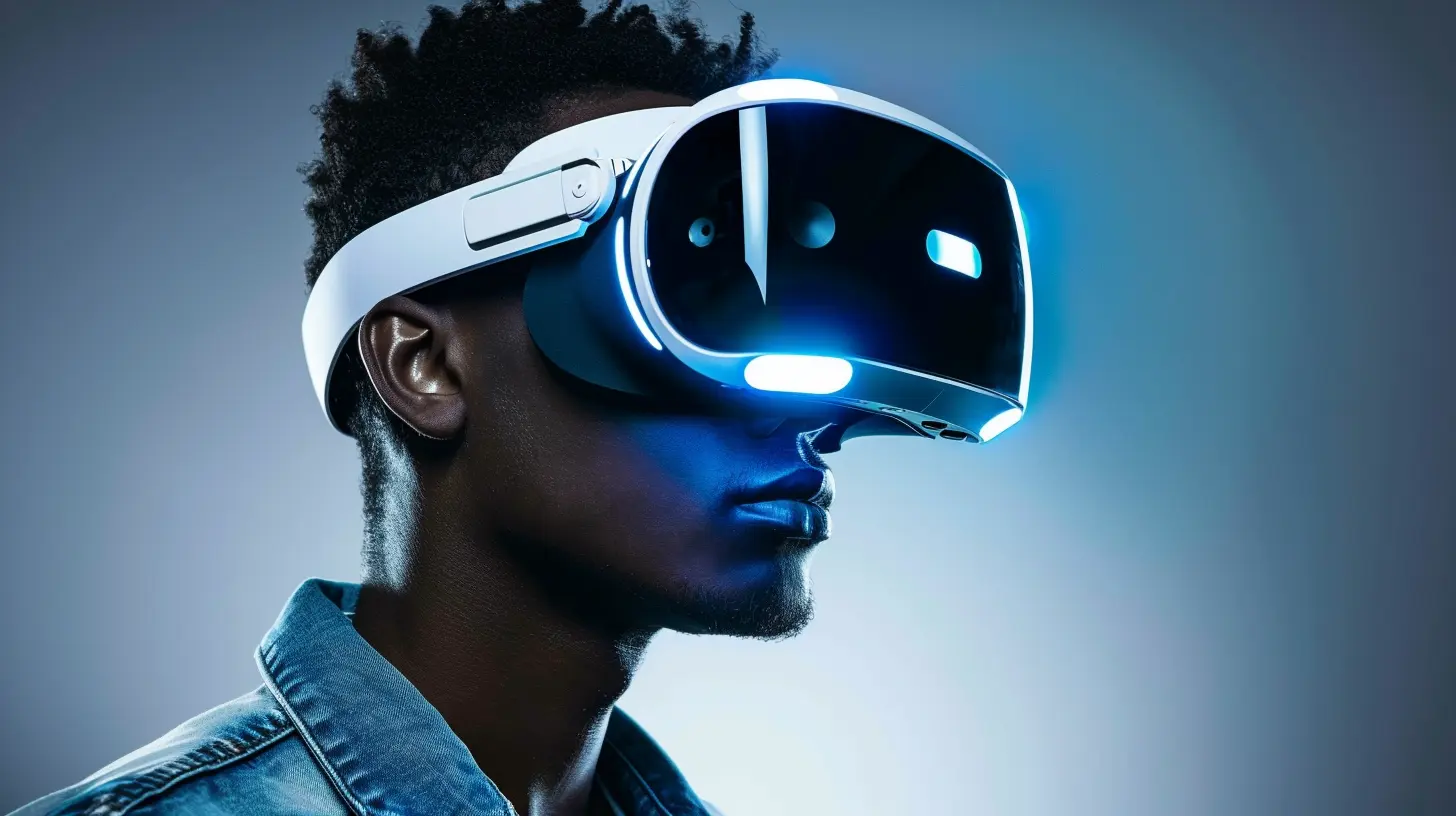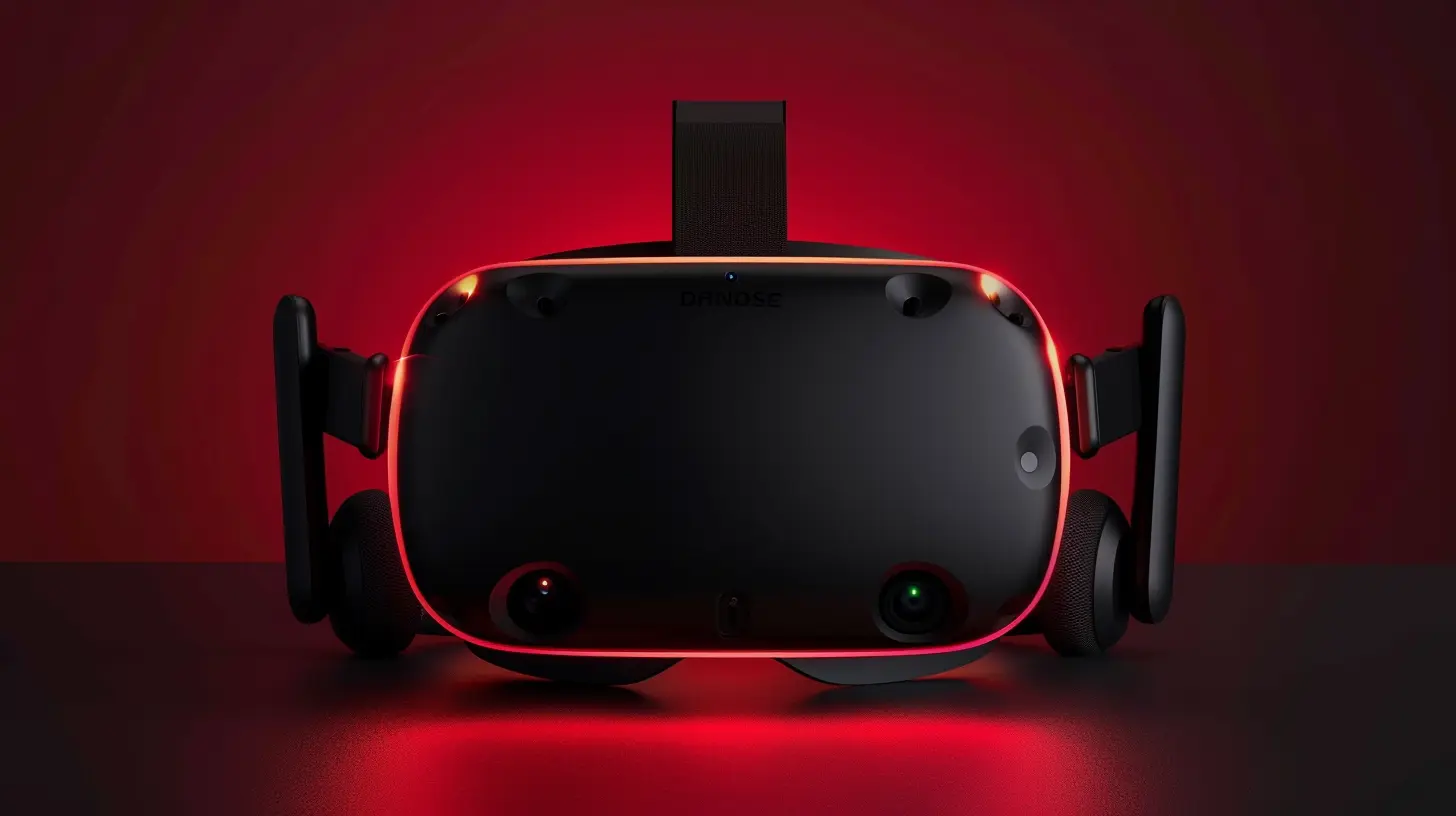The Importance of Haptic Feedback in Enhancing VR Gameplay
26 December 2024
Virtual Reality (VR) has come a long way in recent years. From bulky headsets that looked like props in an old sci-fi movie to sleek, lightweight devices that are surprisingly affordable, VR tech has made massive strides. And sure, visuals and sound play a huge role in making VR experiences feel immersive, but there’s one feature that often flies under the radar: haptic feedback.
Yep, haptic feedback — that little vibration your smartphone makes when you get a text. But in VR, it's so much more than just a buzz. It's the secret sauce that takes immersion to the next level. In this article, we’re diving into why haptic feedback is such a game-changer for VR gameplay and how it enhances the overall experience. 
What Is Haptic Feedback, Anyway?
Before jumping into the details, let’s get on the same page about what haptic feedback actually is. In simple terms, haptic feedback is the use of tactile sensations — vibrations, jolts, or forces — to communicate information to the user. It's like the digital equivalent of feeling a slap on your shoulder or a tap on your wrist.In gaming, haptic feedback lets you physically "feel" the actions happening in the virtual world. A gun recoil, the impact of a punch, or the sensation of walking on rough terrain — haptics can deliver these feelings to your hands, arms, or even your entire body. Sounds cool, right?
Now, let’s talk about why this is critical for VR. 
The Role of Haptic Feedback in Immersion
Let’s not sugarcoat it: VR’s whole selling point is immersion. The moment you slip on that headset, you’re transported to a new world. But here’s the thing — visual immersion alone doesn’t cut it. Sure, it’s fun to look at lush alien landscapes or towering castles, but the experience can feel hollow if you don’t interact with the environment in a natural way.Haptic feedback fills that gap. When you can "feel" the environment, the immersion level cranks up to 11. For example, imagine playing a VR sword fighting game. Without haptics, you’re just waving a controller around, and your opponent's strikes pass through you like a ghost. Add haptic feedback, and suddenly, every clash of swords feels real. That vibration in your hands? That’s the magic that makes your brain believe, even if just for a second, that you’re really in battle. 
Enhancing the Emotional Connection
Let me ask you this: have you ever been so into a game that you actually felt emotionally attached to what was happening? Maybe you felt your heart race during a tense boss fight or teared up during a heartfelt cutscene. Haptic feedback amplifies that emotional connection.How? By making actions feel personal. Let’s say you’re exploring a haunted mansion in VR. Without haptics, you might see a ghost pop out, get scared for a second, and move on. But with haptics? Oh boy. A sudden cold buzz through the controller when the ghost flies through you makes your heart skip a beat. It’s that physical sensation that hooks you emotionally and makes the experience unforgettable. 
The Science of Sensation: Why Touch Matters in VR
Here’s a fun fact: humans process their environment using multiple senses, and touch is one of the most crucial. Your brain craves tactile feedback because it’s how we understand the world. Even in the real world, we rely heavily on touch. Think about shaking someone’s hand, the texture of your steering wheel, or the feel of a fluffy blanket — these sensations are second nature.In VR, haptic feedback bridges the gap between sight and touch. Without it, your brain constantly struggles to reconcile the virtual with the real. For instance, if you’re picking up an object in VR, the visuals might look convincing, but your brain knows something’s off because you’re holding thin air. Add haptics to the equation, and suddenly that object has weight, texture, and presence. It’s the final puzzle piece that makes the world feel real.
Haptics Take Gameplay Mechanics to the Next Level
Alright, let’s talk mechanics. Haptic feedback isn’t just about making things feel cool — it can actually change how games are played. In many cases, it helps players make decisions based on feel alone.For example, some VR shooters use haptics to differentiate between gun types. A pistol might give a short, sharp jolt, while a shotgun delivers a heavy thud. Without even looking, you know what weapon you’re holding just based on how it feels. Similarly, haptics can signal danger. Is your health bar running low? Your controller might start pulsating faintly, warning you to find cover ASAP.
This tactile layer of information adds depth to gameplay in a way that visuals or sound alone simply can’t achieve.
Real-World Applications Beyond Gaming
It's not just gamers who are benefiting from haptic feedback. This tech is already being used in other VR applications, like medical training and education.Imagine you're a medical student practicing surgery in VR. Haptics can simulate the feeling of cutting into tissue or sewing up a wound, giving you hands-on practice without the risk of harming an actual patient. Similarly, for engineering or design students, haptics allows them to "feel" the weight and texture of the virtual objects they’re creating.
Even therapy sessions are integrating haptic feedback. For example, VR combined with haptics is being used to help people overcome phobias or PTSD by creating hyper-realistic but safe simulations.
Limitations and Challenges
Okay, let’s not get too carried away. While haptics in VR is amazing, it’s not perfect. There are some challenges developers and hardware makers face.1. Cost and Accessibility
High-quality haptic equipment can be expensive. Full-body haptic suits, for example, are reserved for enthusiasts and professionals due to their price. This limits how many people can actually experience top-tier haptics.
2. Complexity in Development
Creating realistic haptic feedback isn’t as simple as adding a buzz here and there. Developers have to program the right intensity, timing, and pattern for every interaction. It’s a lot of extra work.
3. Physical Fatigue
Believe it or not, intense haptic feedback can actually wear you out. Imagine playing a high-action VR game where the controller keeps jolting every few seconds. Over time, even subtle vibrations can lead to strain or discomfort.
4. Limited Scope
While haptics can simulate some sensations convincingly, it’s not yet advanced enough to replicate all touch sensations. Complex textures, heat, or cold, for example, are still difficult to reproduce.
The Road Ahead: What’s Next for Haptic Feedback in VR?
Despite its current limitations, the future of haptic feedback in VR is looking pretty exciting. Companies are constantly experimenting with new ways to improve tactile immersion.For instance, researchers are developing soft haptic gloves that let you "feel" textures in VR. There’s also progress in creating full-body haptics, where your entire body can feel environmental effects — like the wind on your skin or the force of an explosion.
In addition, advancements in AI could allow haptics to adapt dynamically to each player’s preferences or physical condition. Imagine a game that learns how much feedback you can handle and adjusts in real-time.
Final Thoughts
Haptic feedback isn’t just a fancy add-on for VR games; it’s becoming an essential tool for creating truly immersive experiences. From pulling players deeper into virtual worlds to revolutionizing how we learn and train, haptics is changing the way we interact with digital environments.So the next time you feel the satisfying thud of a controller or the faint buzz of feedback in your hands, take a moment to appreciate the tech behind it. It's not just a feature — it’s the future of VR.
all images in this post were generated using AI tools
Category:
Virtual RealityAuthor:

Leif Coleman
Discussion
rate this article
11 comments
Hunter Vaughn
Fascinating read! I’m curious how haptic feedback shapes player immersion in VR. Does the intensity of feedback vary with different game genres? I’d love to hear more about specific examples that really highlight this technology's impact!
April 4, 2025 at 4:12 PM

Leif Coleman
Thank you for your interest! Haptic feedback significantly enhances immersion in VR by providing tactile sensations that correspond to in-game actions. For instance, in action games, stronger feedback can simulate impacts, while in puzzle games, subtle vibrations may indicate interactions. Each genre can tailor haptic intensity to enhance the overall experience.
Chase Whitaker
Great article! Haptic feedback truly transforms VR experiences, making them more immersive and engaging. It’s fascinating how these subtle sensations can elevate gameplay and connect us to virtual worlds.
February 15, 2025 at 5:59 PM

Leif Coleman
Thank you! I'm glad you found the article insightful. Haptic feedback really does play a crucial role in immersing players in virtual environments.
Sorin McClintock
Great insights on haptic feedback! It truly adds a new layer to VR experiences, allowing players to feel more immersed in the game. I appreciate how you highlighted its impact on gameplay—it’s often overlooked but makes a significant difference. Looking forward to more discussions on this topic!
February 1, 2025 at 4:16 PM

Leif Coleman
Thank you for your thoughtful comment! I'm glad you found the insights valuable. Haptic feedback truly transforms VR experiences, and I'm excited to explore this topic further with everyone!
Journey Perry
Great article! Haptic feedback truly transforms VR experiences, adding that extra layer of immersion that makes gameplay feel more real. It’s fascinating how these subtle sensations can enhance our connection to the game world. Can’t wait to see how it evolves in future titles!
January 26, 2025 at 3:42 AM

Leif Coleman
Thank you! I completely agree—haptic feedback is key to deepening immersion in VR, and I'm excited to see how it evolves in upcoming games too!
Finley McQuillen
Haptic whispers awaken worlds, bridging dreams and reality in immersive gameplay’s embrace.
January 16, 2025 at 4:03 PM

Leif Coleman
Thank you! I'm glad you appreciate the role of haptic feedback in creating immersive experiences. It truly transforms gameplay by connecting players more deeply to virtual worlds.
Darius Russell
Great insights on immersion!
January 12, 2025 at 5:58 AM

Leif Coleman
Thank you! I'm glad you found the insights valuable.
Briar McTavish
Haptic feedback significantly elevates VR gameplay by creating immersive experiences that engage players on a physical level. It adds depth to interactions and enhances emotional responses, making virtual environments feel more real. Ignoring this technology would mean missing out on the full potential of VR gaming.
January 7, 2025 at 6:03 AM

Leif Coleman
Thank you for your insightful comment! I completely agree—haptic feedback is essential for creating truly immersive VR experiences that engage players both physically and emotionally.
Cerys Barron
Haptic feedback transforms immersion in VR, bridging the gap between virtual and real sensations, yet its implementation often feels inconsistent across experiences.
January 2, 2025 at 4:39 PM

Leif Coleman
Thank you for your insight! You're absolutely right—consistent implementation of haptic feedback is crucial for creating a truly immersive VR experience. We'll continue to explore this aspect in future discussions.
Morgan McPherson
Great article! Haptic feedback truly brings VR to life, turning abstract gaming moments into immersive experiences. It's like having a secret handshake with the game world! Excited to see how developers will keep pushing the boundaries—can’t wait for our thumbs-up moments to feel even more real! 🎮✨
December 30, 2024 at 3:38 AM

Leif Coleman
Thank you! I'm glad you enjoyed the article. Haptic feedback really does elevate the VR experience, and it's exciting to see where developers will take it next! 🎮✨
Carter McHugh
Haptic feedback transforms VR immersion!
December 27, 2024 at 4:01 PM

Leif Coleman
Absolutely! Haptic feedback plays a crucial role in deepening the sense of presence and realism in VR, making experiences more engaging and immersive.
Uriel McGarvey
Haptic feedback is the secret sauce of VR—it's not just about seeing and hearing; it's about feeling. Without that tactile connection, virtual worlds remain flat. Let’s embrace the buzz and bring immersion to life!
December 26, 2024 at 3:49 PM

Leif Coleman
Absolutely! Haptic feedback is crucial for creating a truly immersive VR experience, adding depth and realism that sight and sound alone cannot achieve. Embracing this technology enhances player engagement and connection with virtual environments.
MORE POSTS

Crafting Epic Moments: The Magic of Esports Event Production

The Importance of Soundtracks in Adventure Games

How to Build a Reputation in Competitive Esports Communities

How Game Design Teaches Logic and Systems Thinking

Narrative vs Exploration: Striking the Balance in Open World Games

How to Master the Art of Passing in Football Video Games

Running a Virtual Restaurant: How Cooking Simulators Sharpen Your Skills

What Tabletop RPGs Taught Video Game Designers